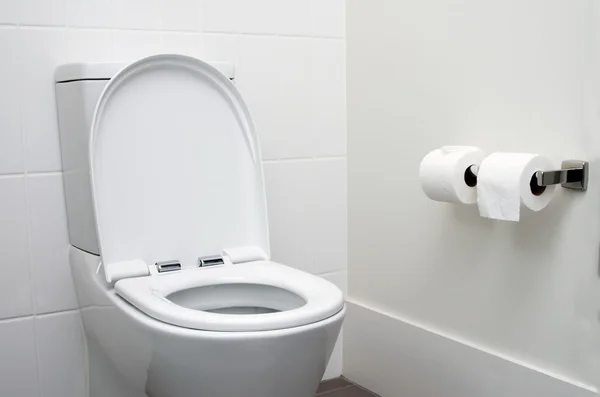Closing the toilet lid before flushing does not prevent viral contamination. A study published in the American Journal of Infection Control found that closing the toilet lid prior to flushing does not mitigate the risk of viral particle spread.
Another study mentioned in CIDRAP suggests that contrary to previous findings, closing the toilet lid before flushing does not stop aerosolized viruses from contaminating the bathroom.
Therefore, based on the available research, it is not effective to rely on closing the toilet lid to prevent viral contamination during flushing.
Findings by a recent study
- Closing the lid doesn’t help: Regardless of lid position, similar levels of bacteria (MS2) were found on toilet seat bottoms, floors, and walls after flushing.
- Main source of contamination: The bottom of the toilet seat was the most heavily contaminated surface, especially with high virus levels in the bowl.
- Disinfection works: Cleaning the bowl with hydrochloric acid and a brush reduced contamination by over 99.99% in the bowl water and 97.6% on the brush.
- Public toilets at risk: Lack of lids in US public toilets exposes users to higher contamination risk.
Implications:
- Closing the lid isn’t an effective way to prevent aerosol spread of viruses or bacteria from toilet flushing.
- Regular disinfection of all bathroom surfaces, especially the toilet seat, is crucial for preventing contamination.
- This is particularly important in households with immunocompromised individuals or when dealing with highly infectious viruses.
How long can viral particles survive on toilet surfaces?
Viral particles can survive on toilet surfaces for a significant period. A new study published in the American Journal of Infection Control found that viral particles spread to many restroom surfaces during toilet flushing, regardless of whether the toilet lid is up or down. The study demonstrated that the only meaningful way of reducing viral particles was through disinfection of the toilet, toilet water, and nearby surfaces. Additionally, the study highlighted that cleaning with a disinfectant and brush reduced viral contamination on the toilet by more than 99.99% and on the brush by 97.64%. Furthermore, the study emphasized the importance of regular disinfection of toilets to reduce contamination and prevent the spread of viruses. Another source mentioned that SARS-CoV-2, an enveloped virus, can survive on surfaces for several days, and fomite transmission is possible and likely involved in viral dissemination. The duration of viral particle survival on toilet surfaces can vary depending on the specific virus and environmental factors such as temperature, humidity, and surface type.
Therefore, it is essential to maintain proper hygiene and disinfection practices to minimize the risk of viral contamination from toilet surfaces.
What are some effective disinfectants for toilet surfaces?
Some effective disinfectants for toilet surfaces include:
Clorox Clean-Up Cleaner + Bleach: This bleach-based cleaner disinfects surfaces and performs everyday cleaning tasks. It is guaranteed by the EPA to kill pathogens, but its fumes are unpleasant to work with. To ensure proper disinfection, leave the cleaner on a surface for 30 seconds before wiping it off.
Clorox Disinfecting Wipes: These wipes are effective for cleaning the exterior of toilets.
Lysol Disinfectant Spray: This spray can be used to clean the toilet’s exterior surfaces and the area around the toilet, such as the tank, seat, bowl’s exterior, and floor.
Clorox Toilet Bowl Cleaner with Bleach: This product is formulated to clean and disinfect the toilet bowl, removing stains, dirt, and bacteria.
White vinegar and baking soda mixture: This natural solution can be used to remove hard water stains and disinfect the toilet bowl. Pour enough cups of white vinegar into the bowl to cover the entire rim and the water line, let it sit overnight, and then pour one cup of baking soda into the bowl and add more vinegar if needed to create a fizzier solution.
Toilet bowl cleaner tablets or disks: These products can be used to clean the toilet’s exterior surfaces and the area around the toilet, such as the tank, seat, bowl’s exterior, and floor.
When choosing a disinfectant, consider the specific problem you are trying to address, such as stains inside the bowl, rust, or hard water rings. It is also essential to check the labels to ensure the product is safe for your toilet and septic system.
How often should toilet surfaces be cleaned to prevent viral contamination?
To prevent viral contamination, toilet surfaces should be cleaned regularly. According to the CDC, heavily contaminated surfaces and items require more frequent and thorough environmental cleaning than moderately contaminated ones.
Toilets are an important source of viral contamination, mainly in healthcare settings, where disinfection can have a crucial role in preventing virus spread.
The study published in the American Journal of Infection Control recommends regular disinfection of toilets to reduce contamination and prevent the spread of viruses.
The study also found that cleaning with a disinfectant and brush reduced viral contamination on the toilet by more than 99.99% and on the brush by 97.64%.
The frequency of cleaning and disinfection may vary depending on the level of contamination, the type of toilet, and the adherence to correct use.
In some cases, more than twice-daily cleaning and disinfection may be warranted.
Therefore, it is essential to maintain proper hygiene and disinfection practices to minimize the risk of viral contamination from toilet surfaces.
Key takeaways:
- Closing the toilet lid is a common practice, but it doesn’t prevent aerosol spread of contaminants.
- Focus on frequent disinfection of bathroom surfaces, especially the toilet seat and bowl, to minimize contamination risk.
- Be extra vigilant in high-risk scenarios with immunocompromised individuals or potent viruses.
ALSO READ: High Blood Sugar Linked to Increased Risk of Hand and Wrist Problems in Diabetics









